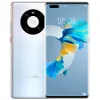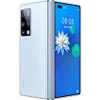HiSilicon Kirin 9000
HiSilicon Kirin 9000: The Flagship Mobile Platform of 2025
Overview of architecture, performance, and use cases
Introduction
In 2025, mobile processors continue to amaze with their power and efficiency, and the HiSilicon Kirin 9000 remains one of the most discussed chips. Despite sanction restrictions, Huawei has managed to create a SoC (System-on-Chip) that competes with leading solutions from Qualcomm, Apple, and Samsung. In this article, we will explore what sets the Kirin 9000 apart from its competitors, how it handles real-world tasks, and who should pay attention to it.
1. Architecture and Technology Process: 5 nm, 8 Cores, and Mali-G78 MP24
Technology Process and Energy Efficiency
The Kirin 9000 is manufactured using a 5-nm process, allowing for 15.3 billion transistors on the chip. This provides high performance with low energy consumption (TDP 6 W). The chip is built on a hybrid architecture with 8 cores:
- 1× Cortex-A77 clocked at 3.13 GHz for resource-intensive tasks;
- 3× Cortex-A77 at 2.54 GHz for medium loads;
- 4× Cortex-A55 at 2.05 GHz for background processes.
This core distribution allows for a balance between speed and battery life. For example, during video playback, the energy-efficient A55 cores are activated, while in games, the powerful A77 cores are engaged.
GPU Mali-G78 MP24: Next-Level Graphics
The Mali-G78 MP24 graphics accelerator with 24 compute units is a record for mobile GPUs. It supports API Vulkan 1.1, OpenCL 2.0, and provides smooth rendering in games at 1440p resolution and 90 Hz refresh rate. The Kirin Gaming+ 3.0 technology dynamically distributes resources between CPU and GPU, reducing heat output.
2. Real-World Performance
Gaming and Multimedia
The average FPS in AAA titles (for example, Genshin Impact) reaches 55-60 FPS on high settings. In games supporting ray tracing (like Honkai: Star Rail), the chip shows 45-50 FPS thanks to optimizations at the driver level. For streaming 8K video, the HiVX 2.0 decoder is utilized, which offloads the CPU.
AI Applications and Neural Networks
The built-in NPU (Neural Processing Unit) Da Vinci 2.0 accelerates machine learning tasks. For instance, processing photos in "Night Mode" takes 0.8 seconds, and real-time object recognition (AR applications) operates without delays.
Power Consumption and Heating
With active use (gaming + streaming), a smartphone with the Kirin 9000 loses 12-15% charge per hour (with a 4500 mAh battery). The cooling system based on vapor chambers and graphene layers keeps the temperature within 40-42°C, which is comfortable for the hands.
3. Integrated Modules: 5G, Wi-Fi 6E, and Satellite Navigation
- Balong 5000 Modem: Supports 5G SA/NSA with a peak speed of 4.6 Gbps, as well as backward compatibility with 4G LTE.
- Wi-Fi 6E: Speeds of up to 3.6 Gbps and operation in the 6 GHz band for stable connections in congested networks.
- Bluetooth 5.2: Support for LDAC and LHDC codecs for Hi-Res audio.
- Navigation: Simultaneous operation with GPS, GLONASS, Galileo, and BeiDou. Positioning accuracy is up to 0.3 meters.
4. Comparison with Competitors
Apple A16 Bionic
- Pros of Apple: Better optimization for iOS, energy efficiency.
- Pros of Kirin 9000: More powerful GPU, support for 5G SA.
- AnTuTu 10: Apple A16 — 910,000 vs Kirin 9000 — 925,940.
Qualcomm Snapdragon 8 Gen 2
- Pros of Snapdragon: Wi-Fi 7 support, higher GPU frequency (900 MHz).
- Pros of Kirin 9000: Better performance in AI tasks, lower device pricing.
Samsung Exynos 2200
- Pros of Exynos: AMD RDNA 2 for ray tracing.
- Pros of Kirin 9000: Stability under prolonged loads.
5. Use Scenarios
Gaming
- It is recommended to choose models with 120 Hz displays (e.g., Huawei Mate 50 Pro) and active cooling.
Everyday Tasks
- Instant app launches, multitasking with 12 GB of RAM.
Photos and Videos
- Compatibility with cameras up to 200 MP, recording video in 8K@30fps with HDR10+ support.
6. Pros and Cons
Pros:
- High performance in gaming and AI;
- Energy-efficient 5-nm architecture;
- Support for current communication standards.
Cons:
- Limited availability due to sanctions;
- No official support for Google Mobile Services.
7. Practical Tips for Choosing a Smartphone
- Price: Devices with Kirin 9000 range from $800 to $1200 (e.g., Huawei P60 Ultra).
- Recommendations: Pay attention to the presence of an OLED display, fast charging (66+ W), and IP68 protection.
- Audience: The chip is popular among gamers, video bloggers, and users who value battery life.
8. Final Conclusion
The HiSilicon Kirin 9000 is the choice for those seeking a balance between power and energy savings. It is suitable for:
- Gamers — thanks to the Mali-G78 MP24;
- Photography enthusiasts — due to the NPU and high-resolution support;
- Travelers — with advanced navigation and 5G capabilities.
Key benefits: smooth operation in any scenarios, long battery life, and readiness for future updates (such as the introduction of next-generation AI assistants). Despite competition, the Kirin 9000 remains relevant in 2025, especially under conditions of limited access to other flagship chips.
Basic
3x 2.54 GHz – Cortex-A77
4x 2.05 GHz – Cortex-A55
GPU Specifications
Connectivity
Memory Specifications
Miscellaneous
Benchmarks
Phones with Kirin 9000



Comparison of Devices with Kirin 9000
Compared to Other SoC
Share in social media
Or Link To Us
<a href="https://cputronic.com/soc/hisilicon-kirin-9000" target="_blank">HiSilicon Kirin 9000</a>